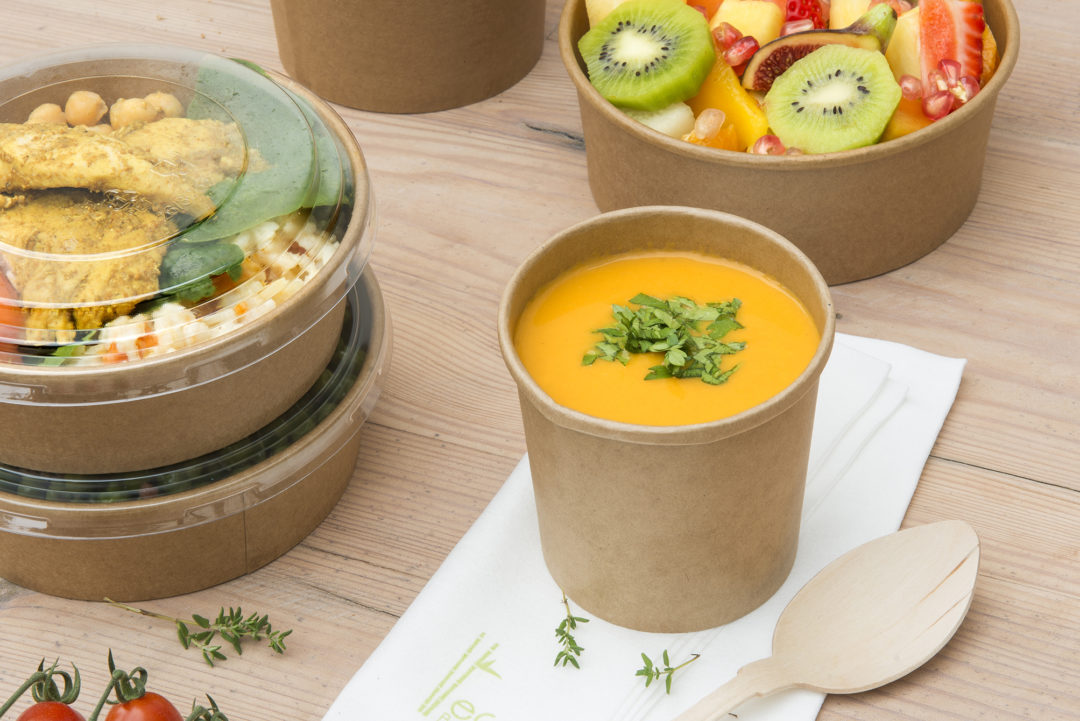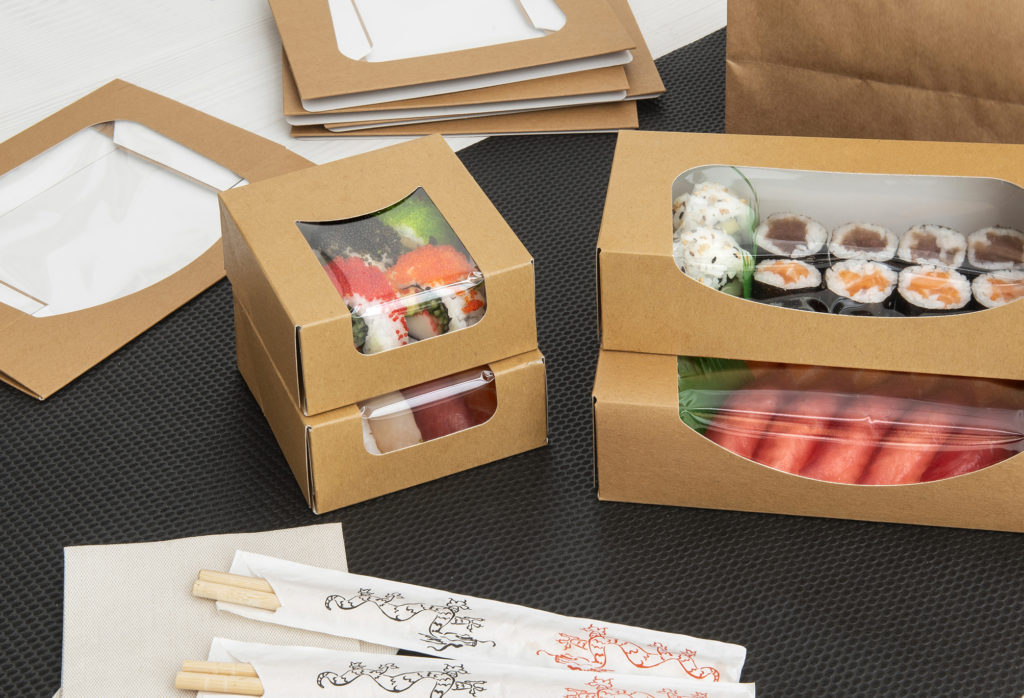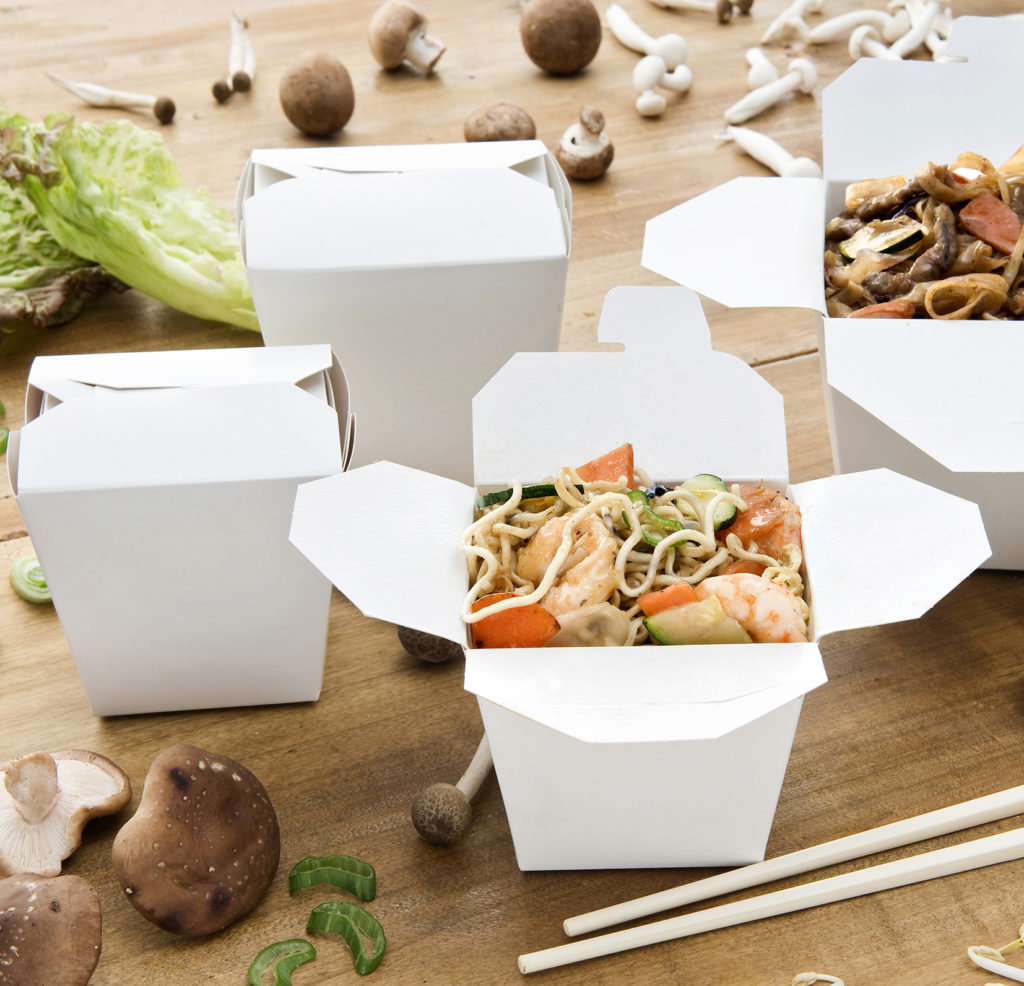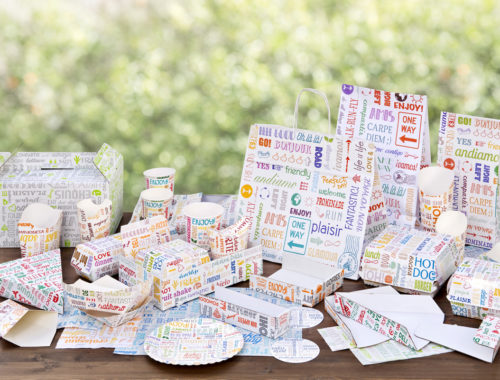We live in a fast-paced world, which is getting faster by the day. People with hardly any time or people who don’t know how to make more time. Millennials immersed in new ways of living –as a side note, nightclubs are closing in droves since people no longer hook up while getting down on the dance floor– followed by Generation Z, who will sustain these new habits and even surpass them. People who live such stressed-out lives that they have to turn to yoga instead of relaxing by doing some cooking.
Conscious breathing, relaxing the mind, and living in the here and now are espoused by coaches and spirituality gurus. Whatever the case may be, the reality is, however, that an increasing number of people are opting for takeaway food when hunger strikes. Food on the go is also part of the here and now, since demand is on the up and shows no sign of slowing down in the short term.
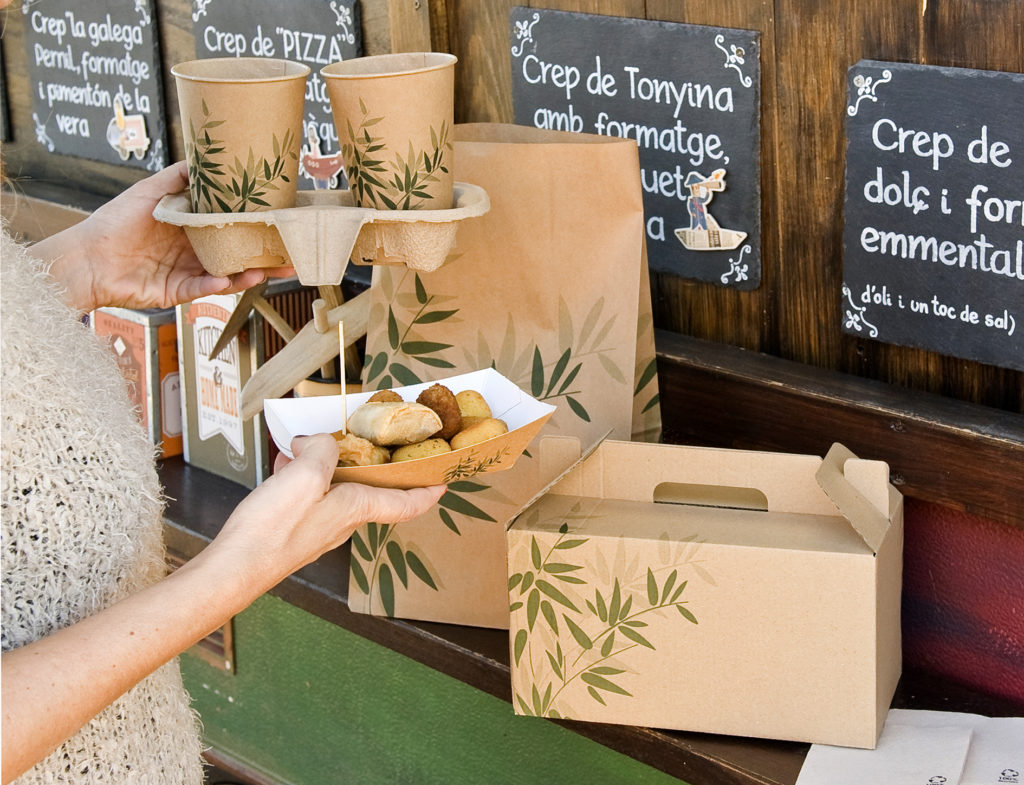
Transport your food with our «Feel Green» packaging, manufactured with recycled and/or environmentally friendly raw materials.
Delivery people on bicycles and mopeds are now a common sight in the urban landscape. Coming home from work or a shopping trip with a takeaway kebab or, quite simply, heading to a supermarket with a stand where a couple of Japanese chefs will make you a sushi tray to go is as routine as winter snow in Finland and year-round rain in Scotland.
The fact is that we speak on the phone with friends and acquaintances less and less and communicate with one another via instant messages much more, so it stands to reason that apps for ordering in are becoming increasingly more successful, as opposed to calling your local Chinese or pizzeria. Digitalisation in this sector is no exception; on the contrary, it’s on a steep upwards trajectory.
One of the biggest economic news stories from last summer was the merger between the British company Just Eat and the Dutch enterprise Takeaway.com, forging a colossal multinational that in 2018 oversaw 360 million orders at a value of 7,300 million euros. Hence there’s little doubt that takeaways and delivery are the great new trends.
According to data from AlphaWise, the market analytics service of Morgan Stanley, the sector’s business volume will increase tenfold in just a couple of years. To make sense of the phenomenon, it is estimated that by the year 2020, 11% of the global market will be nourished by food delivery services, double the current figure.
All this data helps us to understand the role of so-called dark kitchens, otherwise known as ghost kitchens. In other words, our image of a classic restaurant will have to do away with tables, chairs, bars and waiting staff so that kitchens can dedicate themselves exclusively to home delivery.
So, if customers come to your establishment to get a takeaway, or they track you down so you can deliver to them, you must be prepared. Which is why Garcia de Pou boasts all manner of products in its catalogue, such as cardboard tubs in several colours for hot and cold soup, which can also be customised, salad bowls, bags for hamburgers and trays for hot dogs, boxes for sushi and Asian food in general, and a wide range of other types of boxes, self-assembling cases and boxes for jars, for example.
And while you’re preparing your latest order, we’ll leave you with a little bit of music so you can enjoy yourself while you work by listening to a version of Michael Jackson’s ‘Why’, by none other than a duo known as Take Away.

